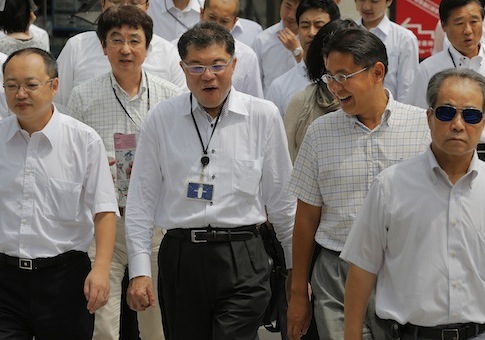A Japanese economist Tuesday provided a sobering assessment of his country’s demographic plight and warned that the rest of the world, including the United States, is trending in Japan’s direction.
Kosuke Motani, chief research economist at the Japan Research Institute, highlighted the contradictions in the Japanese economy at the Heritage Foundation. While productivity, exports, and the money supply have all increased in the last two decades and the unemployment rate has remained low at 3 to 4 percent, incomes and sales in Japan have stagnated.
Japan’s declining workforce and the overall graying of the population is causing the contradictions, he said. The number of citizens older than 65 has tripled in the last 30 years in Japan, which currently has a population of about 127 million, and the birth rate has plummeted. Japan’s population will be cut in half by 2100 at the current fertility rate.
Although Motani said he was a "realist" and does not put much stock in measurements like GDP, economic figures suggest the aging population in Japan has stunted growth and innovation. Japan’s annual rate of GDP growth has averaged an anemic 1.03 percent since 1991.
Most Japanese economists, including advisers to Prime Minister Shinzo Abe, have ignored the demographic problem, he said.
"In macroeconomic theory there is nothing written about [population decline]," he said. "You assume your population is flat."
"[Japanese economists] don’t want to change the theory. They don’t believe in reality."
Abe has perpetuated policies of monetary and fiscal stimulus that have been mostly impotent as the population continues to age, Motani said. Japanese companies have also coped with depressed demand by cutting costs and replacing workers in factories with robots.
Countries near Japan like China and South Korea are not far behind in terms of population decline, Motani added.
"All the countries around the world are following our track," he said.
The United Nations' latest revised population estimates project that the global population will increase to 9.6 billion in 2050 and 10.9 billion by 2100.
However, other experts say the new U.N. projections are too rosy and predict that the global population will peak at mid century and decline to about 8 billion by 2100. The U.N. report assumes Nigeria’s fertility rate will remain constant, for example, even though fertility rates in other emerging countries have declined.
Motani said in an interview after his talk that the U.N. projections are skewed by population growth in the Middle East and Africa and overlook the shift in the ages of countries’ populations.
"For most countries the only increase in population is those over 65 years old," he told the Washington Free Beacon.
"If you look at those under 64, then the world population will not grow as much as you think."
While the United States will still experience an increase in its under-64 population by the end of the century, it is not immune from the world’s population shrinkage, he said. The U.S. birth rate fell to a record low in 2011, especially among immigrant women, according to the Pew Research Center.
Policies like reducing the tax burden on families with children to halt the population slide make sense, he said.
"You have to do three things," he said. "Have more kids, make [the birth rate] stable, and cope with the increase in seniors."
